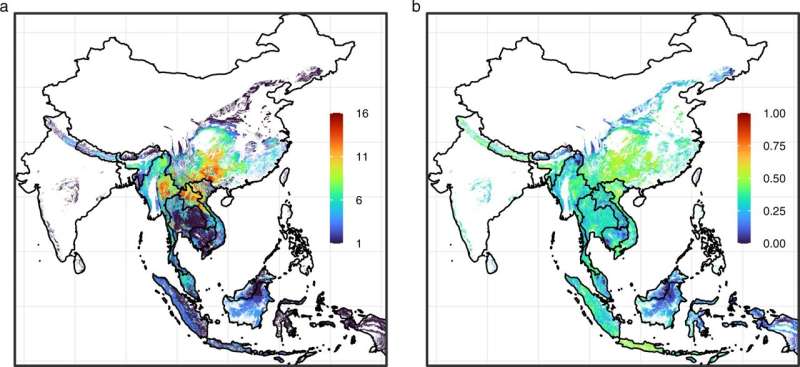
An approach to estimate and map the risk of potential SARS-related coronaviruses spreading from bats to humans in Southeast Asia is presented in a paper in Nature Communications this week. The study could aid the design of surveillance and prevention programs in regions where these disease spillover events may be more likely to occur.
Bats are known to host coronaviruses that may be transmitted to people, including SARS-related coronaviruses. Some studies have suggested that transmission of these viruses to humans may be relatively common in certain regions.
Cecilia Sánchez, Peter Daszak and colleagues devised a strategy to assess the distribution and frequency of bat SARS-related coronavirus spillover risk in Southeast Asia. The authors built distribution models for 26 bat species known to host SARS-related coronaviruses in the region, which allowed them to map where human populations overlap with these bats. The researchers then used epidemiological data and probabilistic risk assessments to estimate the number of people infected with SARS-related coronaviruses of bat origin in Southeast Asia every year.
They estimated a median number of around 66,000 annual cases, many of which may be undetected due to limited surveillance, or because they might resemble other illnesses. However, the authors caution that more data are needed to validate these estimates.
Source: Read Full Article
